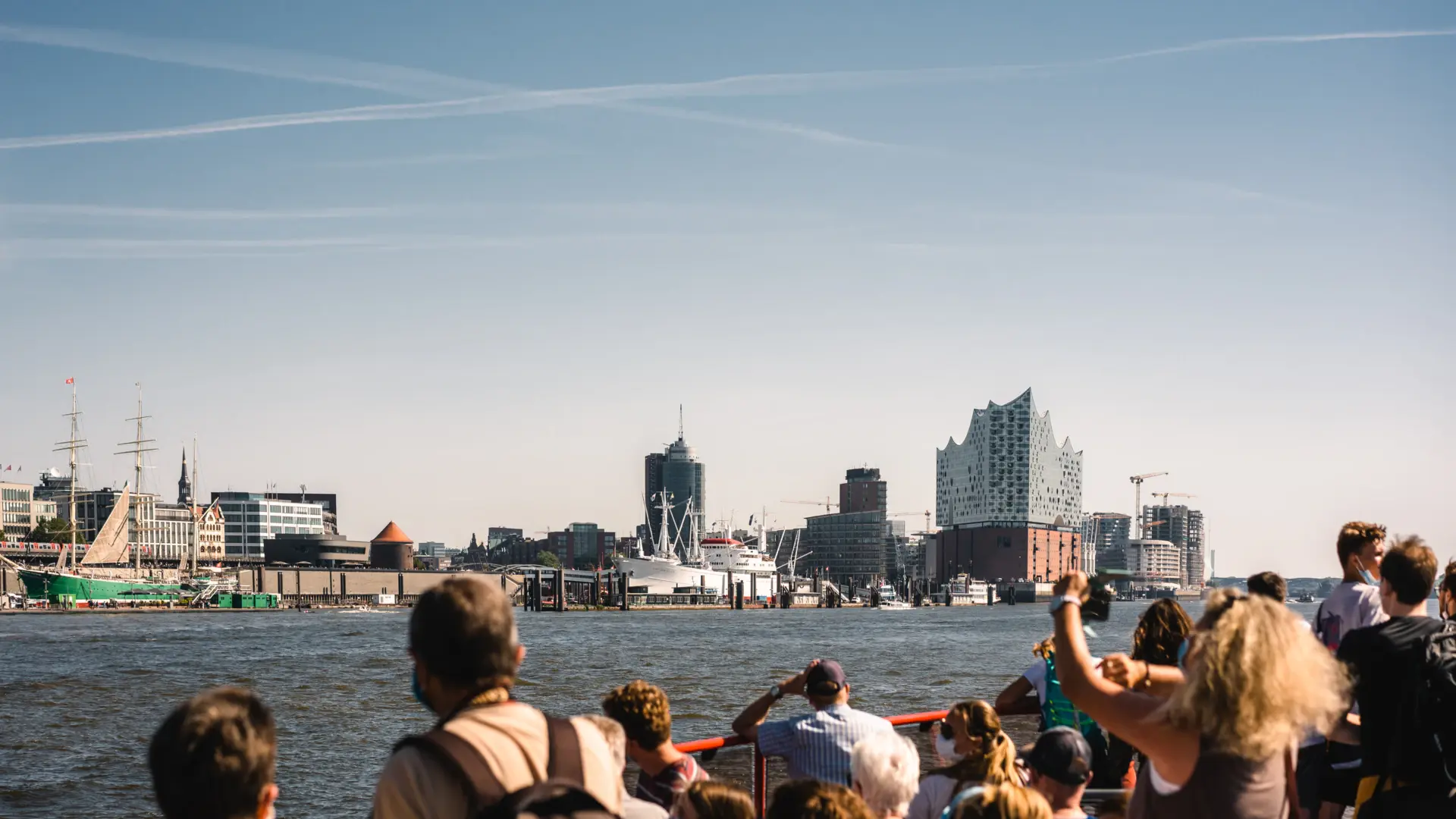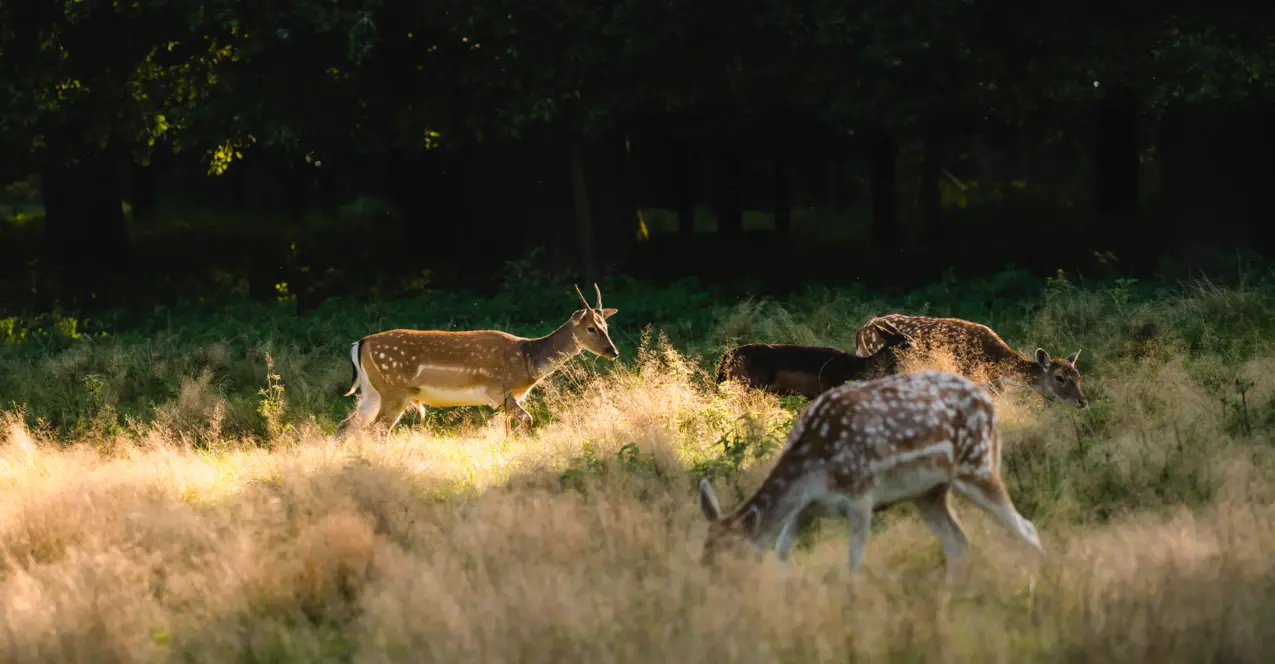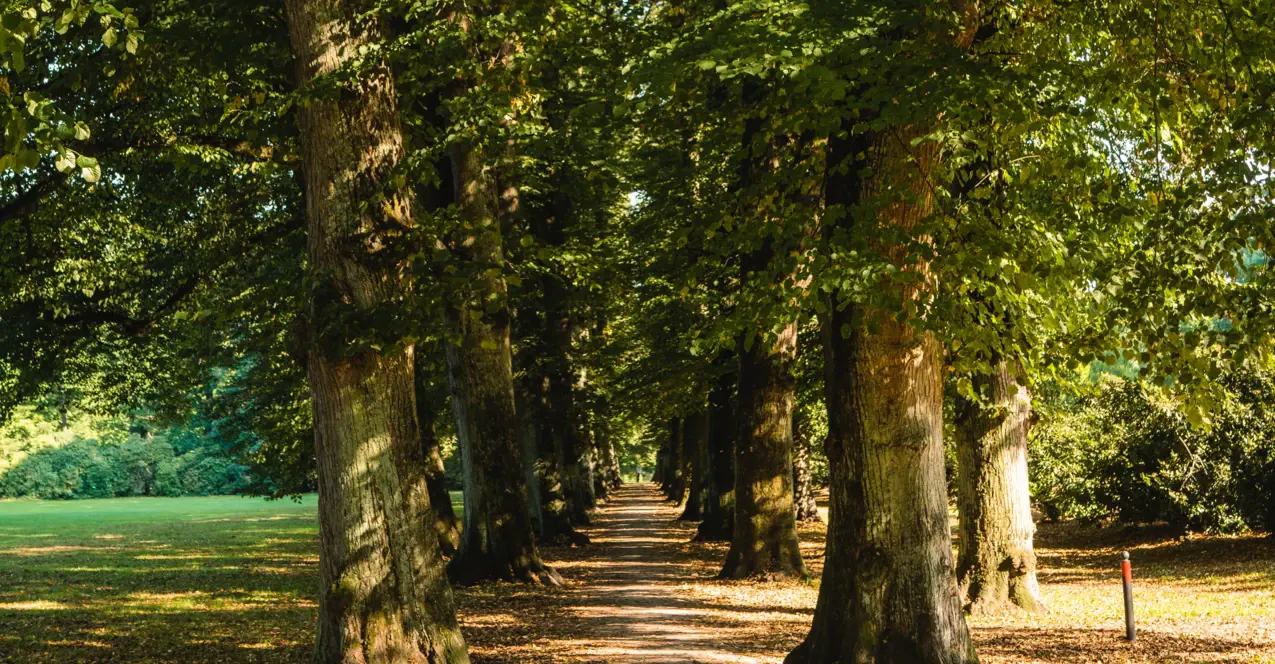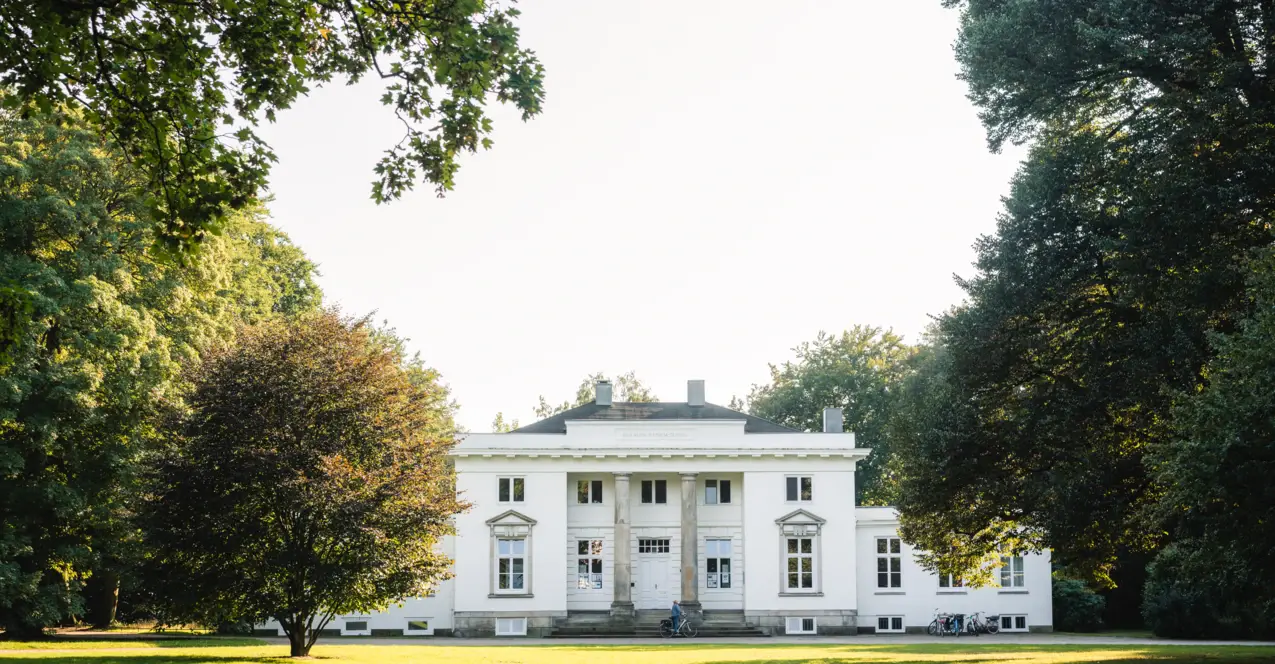Vacation on the Elbe - Vacation at the Hotel Louis C. Jacob
Are you longing for a carefree break? At the Louis C. Jacob you can leave everyday life at the door. Our unique location high above the Elbe and in one of the most beautiful areas of Hamburg makes the Jacob the perfect place to both enjoy carefree relaxation and actively explore the wonderful surroundings in the west of Hamburg. Discover the beauty of the Elbe and the marshes and be amazed at the great nature experiences on offer.
Think about what you fancy over breakfast with a view of the Elbe and look forward to a summer vacation à la Jacob! We will be happy to give you some ideas of what a wonderful summer's day in Hamburg could look like.
Stroll along the beach with staircase district
Directly below the Jacob, you can walk for hours both up and down the Elbe. Downstream along the river below the Hirschpark past the Mühlenberger Segelclub to Blankenese. There, the walker almost feels like they are in Italy: the former fishing village presents itself with the picturesque Treppenviertel, one of the most sought-after residential areas in the Hanseatic city, along the banks of the Elbe. Most residents can only reach their houses via stairs, some of which are still original captain's houses. A walk along the steps offers many picturesque views and photo opportunities.
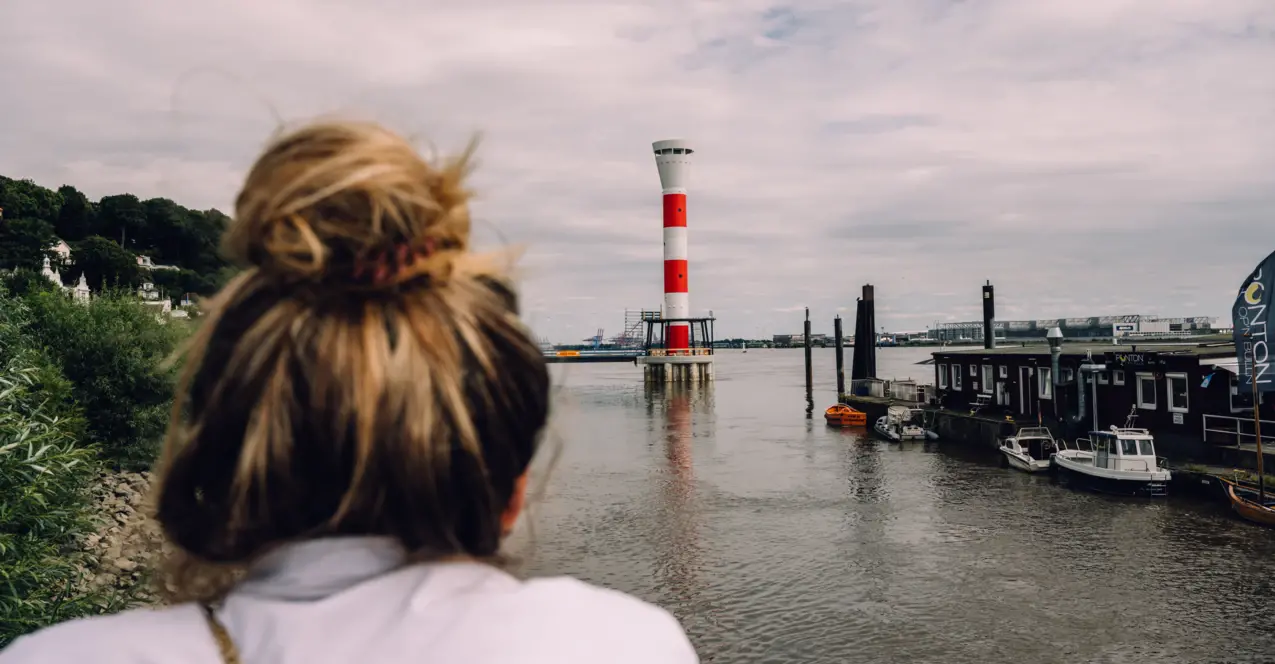
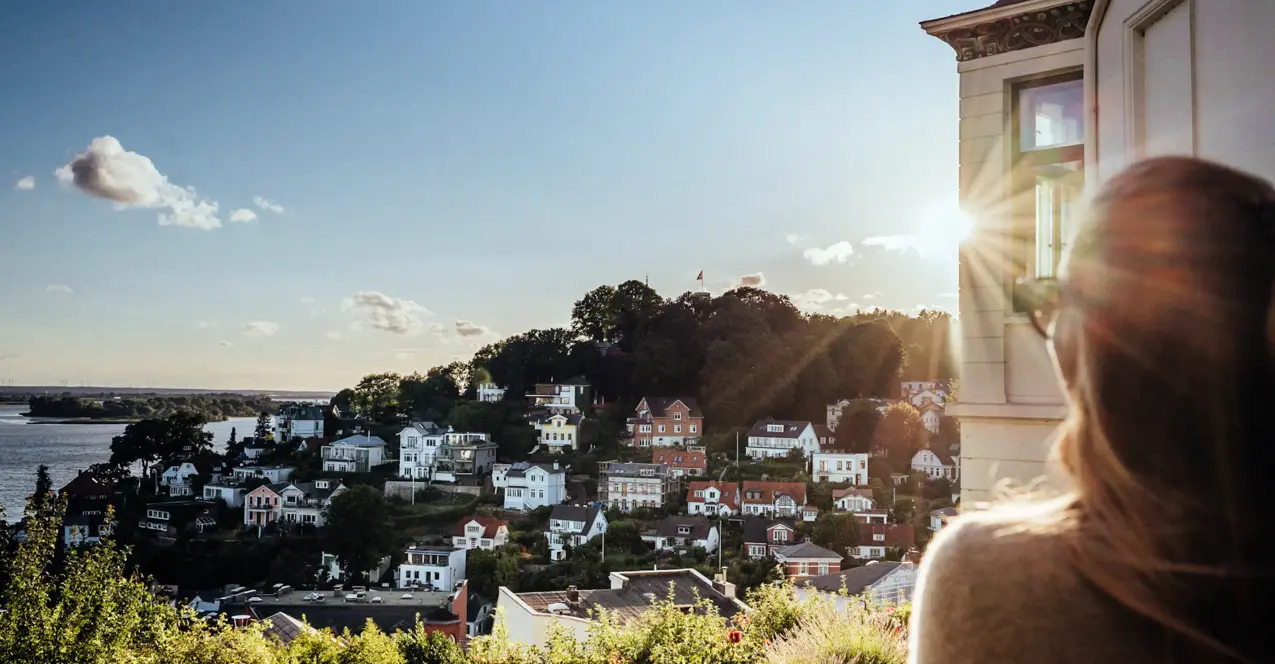
Hirschpark and Lola Rogge House
You can also walk in the direction of Blankenese from the Jacob and then take a stroll through the beautiful Hirschpark and down the southern steps to the Elbe. The stately park was laid out as a country estate as early as 1620. In 1786, the merchant Johann Caesar IV. Godeffroy at an auction. The neoclassical country house on the western side of the Elbe, which today houses a ballet school, was designed by the later famous architect Christian Frederick Hansen. The thatched Kavaliershaus was built around 1800 and today houses the "Witthüs", a tea room where you should definitely try the cake specialty "jellyfish on sand" - sitting outside under the large ancient trees. Incidentally, the writer and organ builder Hans Henny Jahnn lived in this house from 1950 to 1959.
A natural idyll on the Elbe
The Hirschpark is a beautiful, varied landscape garden - wide meadow areas, imposing individual trees and picturesque groups of trees together with smaller wooded areas form a magnificent overall picture. There are also two small representative and show gardens in the French style dating from around 1855 in the western half.
Look out for the deer enclosure and watch the animals as they look for their sunny spot in the park. Then stroll on and enjoy the view of the Elbe.
By the way: the park has been owned by the city since 1924. The avenue of lime trees on the western side of the park is also picturesque.

Beach path in Blankenese
The Strandweg runs parallel to the Elbe at water level - the feeling of the big city disappears completely here. you feel as if you are by the sea and will find several places to stop for refreshments. You pass the Op'n Bulln pontoon first. There are two places to stop for a bite to eat here, offering a fantastic view of the Elbe. Last year, the 'Bulln' was almost sunk when it was rammed by a container ship. Sitting on the water like this with a cool drink is simply wonderful!
A few hundred meters further on, in cabin SB 12, you can sit with your feet in the sand on the beach with a view of the lighthouse, ships and the island of "Schweinesand". Children dig in the sand in the bay and the matjes on your plate taste at least as good as on a North Sea island.
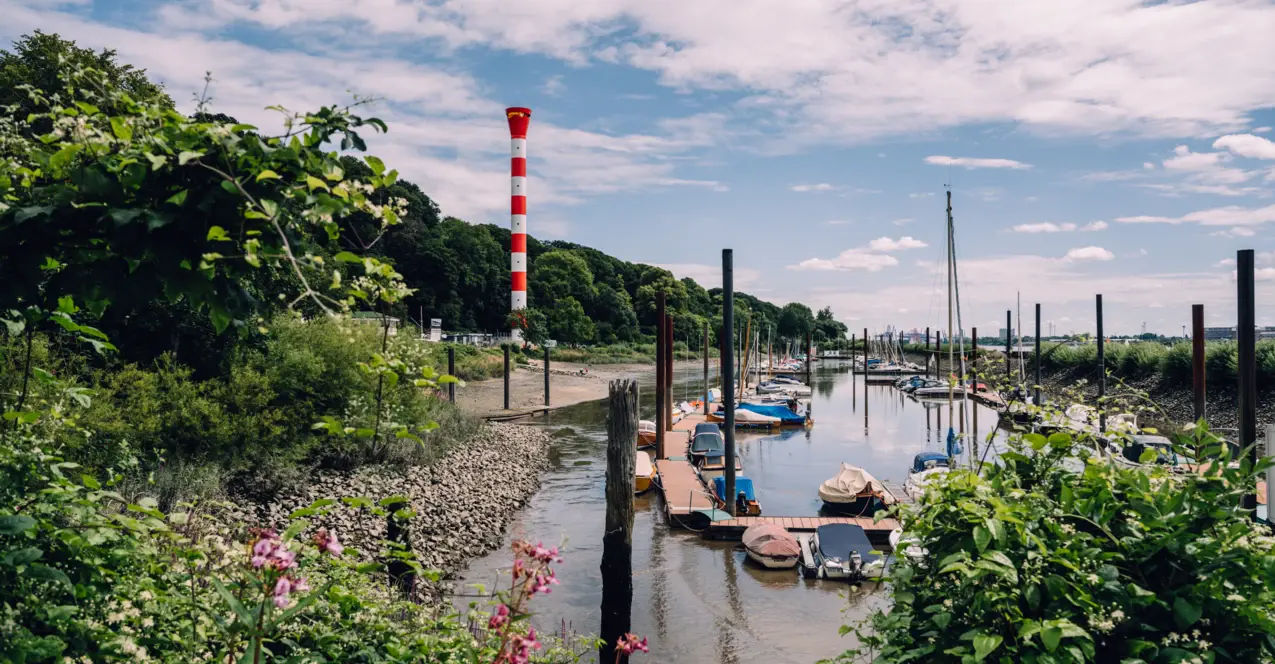
Two shipwrecks and the Roman garden
At the end of the beach path, the route to the Waseberg branches off to the right and you continue straight ahead along the Falkensteiner Ufer. Two shipwrecks protrude from the Elbe, which are particularly good to admire at low tide. The wrecks of the "Uwe" and the "Polstjernan". The Finnish four-masted schooner Polstjernan sailed along what is now the Kiel Canal towards England on October 20, 1926, loaded with crated timber. A sudden explosion of the engine set the ship and its timber cargo ablaze within seconds and the ship could no longer be saved. Tugs brought the burning ship to the mouth of the Elbe and a salvage company based in Hamburg ran the wreck aground in Blankenese a few days later.
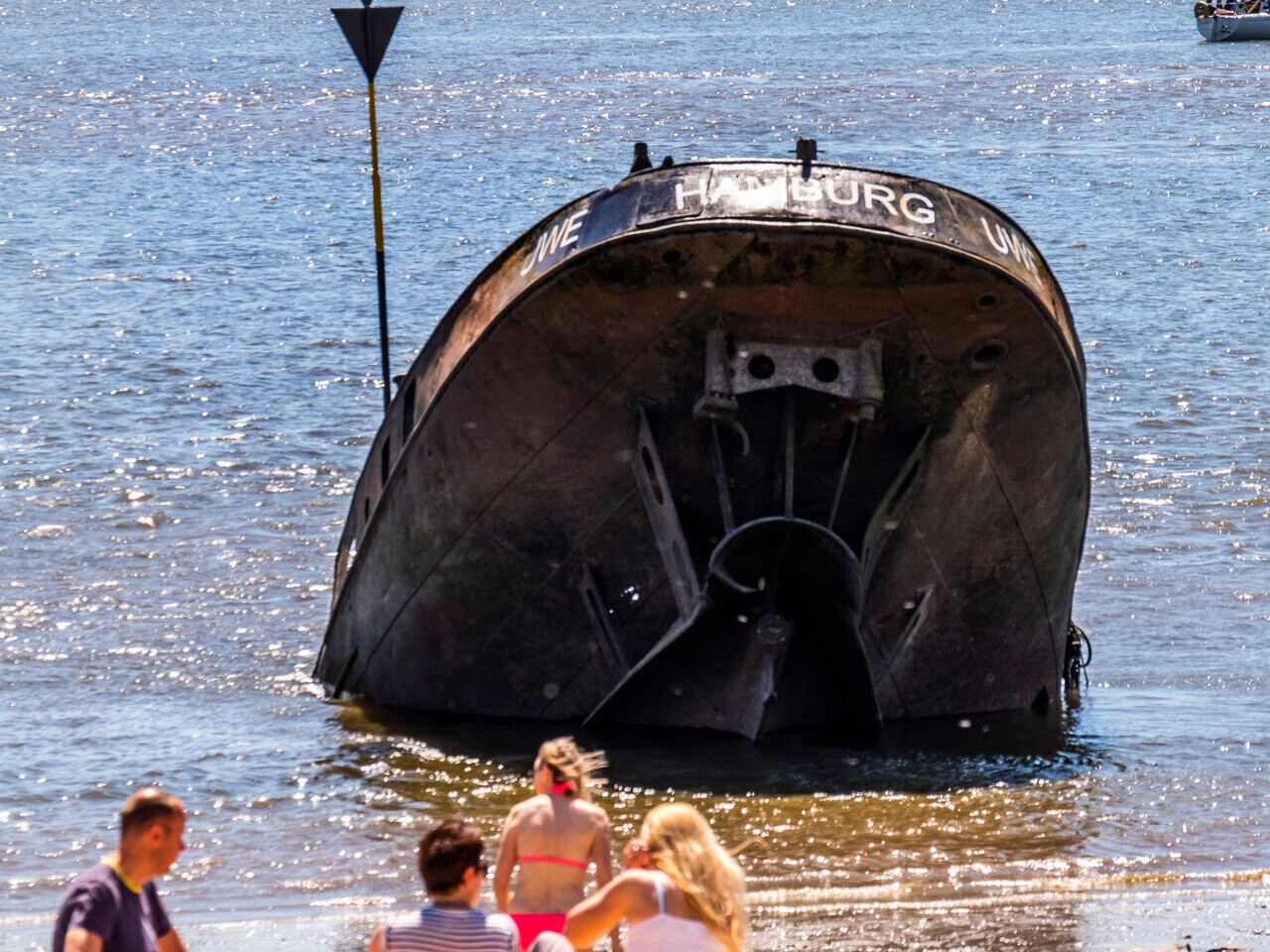
Uwe on the Elbe
The second wreck is "Uwe". Thick fog lay over the Elbe on December 19, 1975, and visibility was miserable. The reason for the momentous collision: the freighter "Wiedau", like the barge "Uwe", was traveling on the river when the Polish freighter "Mieczyslaw Kalinowski" suddenly appeared. When the two freighters collided, the "Wiedau" was turned around and cut the "Uwe" in half. The captain of the "Uwe" and 16 crew members of the "Wiedau" were able to save themselves - two people fell victim to the collision.
Up to the galleries
The climb up the stairs from the Elbe may be a little arduous, but it's worth the effort. A little break like in Italy awaits you in the Roman Garden. The galleries, imposing staircases and the ancient amphitheater give it a Mediterranean flair. Look out over the Elbe and experience Hamburg from a completely different perspective.
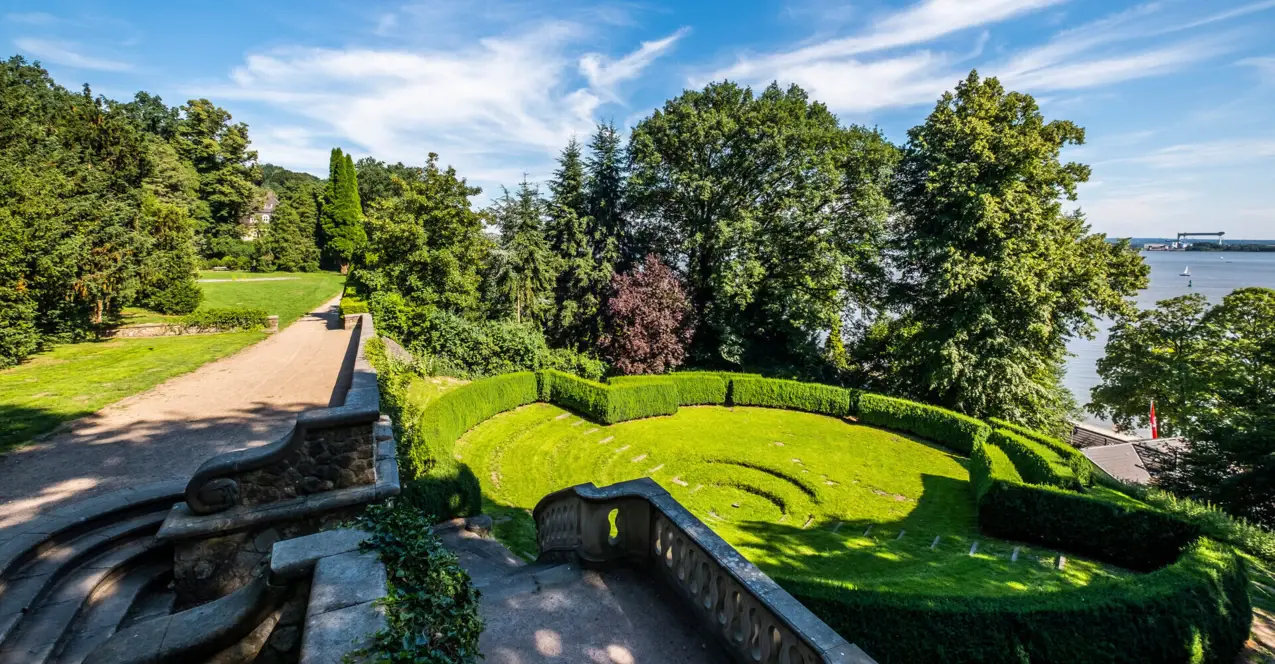
Bismarckstein on the Waseberg
At 87 meters above sea level, the Waseberg is the third highest elevation in the Hanseatic city. And anyone who has ever hiked up to the Bismarckstein from the Strandweg will wonder whether it was really only 87 meters. As you climb through the forest, there are always great views of the Elbe! The observation tower on the summit, which has unfortunately been inaccessible since 1970, was built back in 1836 on behalf of the Hamburg merchant and co-founder of the Holsten brewery, Julius Richter.

The Hamburg businessman and co-founder of the Holsten brewery, Julius Richter, had bought the site in order to erect a monument to Chancellor Otto von Bismarck, whom he so admired. However, this plan failed due to lack of money and the fact that Hamburg also wanted to erect a monument to Bismarck and did so - in what is now Baur's Park in Blankenese, incidentally the largest in the world. In 1910, the city bought the entire site from Julius Richter and in 1935 erected a memorial stone on the current site in memory of the victims of the navy.

The sporting spirit is awakened here
Cycling fans are familiar with the Waseberg: the world's elite have been meeting here since 1997 for the Cyclassics, during which the route from the Strandweg has to be completed three times. A frenetically celebrated spectacle!
Incidentally, the steep route is also used by special buses from the Hamburg Transport Association, which are therefore also known as "mountain goats".
